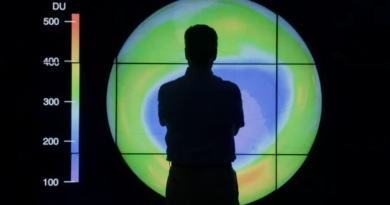Unavoidable Breach of Critical Global Warming Threshold Imminent: Record High Carbon Emissions Signal Urgent Climate Concerns

At present emission rates, recent research indicates a 50% likelihood that global warming will consistently surpass 1.5 degrees Celsius within approximately seven years. The Global Carbon Budget report, unveiled during the United Nations Climate Change Conference of the Parties (COP28) in Dubai, underscores the alarming surge in global carbon emissions from fossil fuels, reaching a new high in 2023. Scientists caution that surpassing the perilous threshold of 2.7 degrees Fahrenheit (1.5 degrees Celsius) above preindustrial levels now seems unavoidable.
In 2023, human activities discharged 40.6 billion tons (36.8 billion metric tons) of carbon dioxide into the atmosphere, marking a 1.1% increase from the previous year. When factoring in emissions from land-use changes, including deforestation, the total emitted carbon dioxide amounted to 45.1 billion tons (40.9 billion metric tons) in 2023. Current emission levels suggest a 50% chance of consistently exceeding a 1.5-degree Celsius rise in global temperatures within the next seven years.
Released amidst a backdrop of record-breaking temperatures and extreme weather events, the report emphasizes the pressing need for swift decarbonization. Despite promises from governments, investors, and companies, the report’s authors lament the considerable gap between rhetoric and action.
Lead author Pierre Friedlingstein, a climate science professor at Exeter University, notes, “The impacts of climate change are evident all around us, but action to reduce carbon emissions from fossil fuels remains painfully slow.” The report, published in the journal Earth System Science Data on December 5, signals an impending overshoot of the 1.5-degree Celsius target set by the Paris Agreement, requiring leaders at COP28 to agree on rapid fossil fuel emission cuts to salvage the 2-degree Celsius goal.
The report highlights projections for a 1.5% increase in oil and a 0.5% increase in gas emissions, while coal emissions, previously believed to have peaked in 2014, are expected to rise by 1.1%. India’s emissions are predicted to surge by 8.2%, China’s by 4%, whereas the European Union and the U.S. are anticipated to decrease by 7.4% and 3%, respectively. The rest of the world’s emissions are expected to decrease by 0.4%.
To meet the Paris Agreement target, global greenhouse gas emissions must plummet by 45% by 2030 and achieve net-zero status by midcentury. Despite half of emissions being absorbed by oceans and land sinks, the report underscores the necessity of longer-term solutions like widespread carbon capture. However, such technologies face significant barriers, including environmental, economic, and technological challenges. Excluding nature-based methods, such as reforestation, existing carbon-capture technologies removed a mere 0.011 million tons (0.010 million metric tons) of carbon dioxide in 2022—far from enough, considering yearly emissions.
The IPCC acknowledges that the only scaled-up carbon-capture methods involve reforestation, improved forest management, and carbon sequestration in soil. Yet, these mechanisms are susceptible to sudden releases through forest fires and human resource demands, both exacerbated by climate breakdown.
Corinne Le Quéré, a climate science professor at the University of East Anglia, observes, “The latest CO2 data shows that current efforts are not profound or widespread enough to put global emissions on a downward trajectory towards Net Zero, but some trends in emissions are beginning to budge, showing climate policies can be effective.” She emphasizes the need for all countries to accelerate their decarbonization efforts to avert the most severe impacts of climate change.








